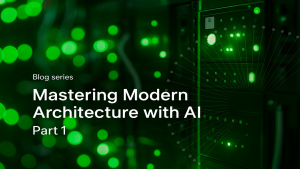Agentic AI Workflows
Agentic AI Workflows are self-improving systems that adapt in real time, automating complex tasks with continuous feedback. Unlike static AI, they dynamically refine actions to enhance efficiency and adaptability. This article explores how Agentic AI Workflows drive automation, optimize decision-making, and transform industries with intelligent, autonomous processes.
Key Takeaways
- Adaptive Mechanisms: Agentic AI Workflows adapt in real time based on new data and feedback loops.
- Cross-Industry Applications: From healthcare diagnostics to personalized e-learning, Agentic AI drives innovation.
- Efficiency and Flexibility: Businesses benefit from faster decision-making and resilient processes.
- Ethical Oversight Needed: Bias, data privacy, and accountability remain critical concerns.
- Future Outlook: Wider adoption, advanced technologies, and global integration will shape how AI evolves.
How Agentic AI Workflows Work
Agentic AI Workflows are not merely about automating a single process; they are about creating intelligent systems capable of self-directed learning and adaptation. Below is a step-by-step look at a typical Agentic AI workflow, along with some illustrative examples that show how these workflows function in real-life scenarios.
Step-by-Step Breakdown of a Typical Agentic AI Workflow
- Data Ingestion and Preprocessing
- Collection: Gather data from multiple sources, including databases, APIs, and user input.
- Cleaning: Remove duplicates or errors.
- Normalization: Convert data into a consistent format.
- Filtering: Determine which inputs are most relevant for the workflow’s objectives.
- Initial Model Development
- Model Selection: Choose from various algorithms or AI architectures (e.g., neural networks, decision trees, or large language models).
- Training Setup: Define parameters like number of epochs, batch sizes, or performance metrics.
- Iterative Refinement
- Feedback Loops: Compare model outputs with target results, identifying successes and failures.
- Retraining: Adjust model parameters in real time, informed by new or augmented data sets.
- Performance Monitoring: Continuously track key indicators to ensure improvements are quantifiable.
- RAG (Retrieval-Augmented Generation) Integration
- Knowledge Base Connection: In a retrieval-augmented system, the AI workflow taps into external data sources or knowledge repositories.
- Contextual Responses: Before generating outputs, the AI “retrieves” relevant context, improving the quality of decisions or text responses.
- Adaptive Decision-Making
- Real-Time Adjustments: Based on the latest data and results from RAG integration, the system refines its suggestions or actions.
- Multi-Agent Coordination: Multiple AI agents may collaborate to solve distinct parts of a complex problem, exchanging insights to improve the overall outcome.
- Deployment and Continuous Optimization
- Real-World Implementation: The refined model is rolled out in production, whether that’s in a software platform, chatbot, or an autonomous machine.
- Ongoing Feedback: Every user interaction or environmental change provides new data for further optimization.
Visual Example: Iterative Refinement Loop
Phase | Activity | Outcome |
Initial Pass | AI generates a first draft or decision | Rough but workable solution |
Critique | System reviews results against target metrics | Identifies errors or inefficiencies |
Refine | Updated data or parameters are applied | Improved, more accurate output |
Validate | Outputs are tested or validated in real time | If acceptable, deployed; if not, cycle repeats |
Example
- Automated Email Categorization: Suppose a company uses an AI agent to categorize incoming customer inquiries (billing, technical support, feedback). Initially, the agent might misclassify 15% of emails. Through continuous training and real-time feedback from human reviewers, the system reduces the error rate to under 3% within a few weeks—showing how Agentic AI adapts and refines its performance over time.
Agentic AI Workflows enable these refined and adaptive loops by design. Rather than a static sequence of events, each step in the process informs the next, creating a living system capable of self-improvement.
Applications of Agentic AI Workflows Across Industries
Agentic AI workflows are transforming how businesses approach problem-solving, customer engagement, and operational efficiency. Below are some examples of how these workflows manifest in different sectors, from healthcare to customer service.
Healthcare: Adaptive Diagnostics and Treatment Plans
- Predictive Diagnostics
- AI agents analyze patient symptoms and medical histories in real time.
- Continuous data feeds—such as wearable monitors—inform models about changes in patient conditions.
- As new information arrives, treatment recommendations adapt, shifting from a one-size-fits-all approach to personalized medicine.
- Treatment Optimization
- Agentic AI workflows compare each patient’s response to different medications, identifying the most effective treatment plan.
- Real-time feedback from patient vitals allows these workflows to quickly detect adverse reactions, reducing risk and improving outcomes.
Education: AI-Driven Personalized Learning Experiences
- Adaptive Learning Platforms
- Students receive customized lesson plans based on performance and engagement metrics.
- As the student interacts with the curriculum, the AI agent refines the difficulty level or format—games, quizzes, videos—to boost learning.
- Progress Tracking
- Detailed dashboards track skill development.
- AI agents make data-driven recommendations (e.g., spending more time on algebra, diving deeper into a science project) and adjust future lessons accordingly.
Customer Service: Autonomous Agents Handling Inquiries
- Natural Language Processing (NLP) Chatbots
- Agentic AI workflows enable chatbots to learn from each conversation, refining their ability to interpret slang, regional dialects, or industry jargon.
- Feedback loops help the bot redirect complex cases to human agents when needed, ensuring seamless service.
- Continuous Learning
- Customer feedback is automatically analyzed to update the bot’s language model.
- As new products or issues emerge, the AI agent integrates updated FAQs and knowledge bases into its responses without human intervention.
Visual Table of Industry Use Cases
Industry | Core Application | Agentic Advantage |
Healthcare | Dynamic Diagnostics & Treatment Plans | Personalized patient care, minimized risk |
Education | Adaptive e-Learning Platforms | Customized lesson delivery, higher engagement |
Customer Service | Autonomous Chatbots & Ticket Handling | Continuous learning, faster resolution times |
Agentic AI workflows excel in these scenarios because they are not limited by static data or pre-programmed rules. Instead, they evolve based on real-time conditions, making them uniquely suited for roles where context and adaptability are paramount.
Benefits of Agentic AI Workflows
Agentic AI workflows are rapidly gaining traction because they address some of the most pressing challenges in modern business and industry. Below are three primary benefits—efficiency, adaptability, and improved decision-making—along with examples illustrating how these advantages play out in practice.
Efficiency: Automating Repetitive Tasks
Agentic AI workflows handle routine, repetitive tasks at scale, freeing human teams to focus on strategic or creative activities.
- Resource Allocation
- Example: A manufacturing plant implements Agentic AI to schedule machine maintenance. By constantly analyzing production data, the system automatically plans downtime and orders parts, reducing unplanned halts by 40%.
- Process Streamlining
- Example: A financial services firm uses Agentic AI workflows to automate client onboarding. Forms, approvals, and compliance checks happen in real time, cutting overall onboarding time from weeks to just days.
Adaptability: Adjusting Dynamically to Real-Time Data
Traditional workflows can become obsolete if conditions change. Agentic AI workflows, however, pivot based on live feedback and evolving data streams.
- Real-Time Market Adjustments
- Example: An e-commerce platform employs an AI agent that monitors inventory and adjusts pricing dynamically based on demand. When a product’s popularity surges, the agent automatically replenishes stock or slightly increases the price to balance supply and demand.
- Environmental Fluctuations
- Example: In renewable energy management, Agentic AI monitors weather patterns and adjusts energy distribution between solar, wind, and battery storage systems to optimize efficiency.
Improved Decision-Making: Leveraging Feedback to Enhance Outcomes
Agentic AI agents aren’t just automating—they are learning. This iterative learning allows them to offer higher-quality decisions over time, refining each output based on past successes and failures.
- Data-Driven Insights
- Example: A global retailer uses Agentic AI workflows to analyze customer data for product recommendations. As the system observes purchase behaviors, it refines suggestions, leading to higher conversion rates and increased customer satisfaction.
- Continuous Evaluation
- Example: An HR department taps Agentic AI to filter job applicants. Using real-time performance data from newly hired employees, the system iterates its criteria to identify top talent more accurately for future postings.
Quick Reference Table: Key Benefits
Benefit | Primary Mechanism | Outcome |
Efficiency | Automating repetitive tasks & resource allocation | Cost savings, time savings, reduced manual errors |
Adaptability | Real-time data integration & iterative feedback | Rapid response to changing market or conditions |
Better Decisions | Ongoing learning & data-driven insights | Higher-quality outputs, strategic advantage |
By integrating these benefits into core operations, businesses not only streamline current practices but also gain the flexibility to innovate and pivot as market conditions and technologies evolve.
Ethical Considerations of Agentic AI Workflows
While Agentic AI workflows hold immense promise for efficiency and innovation, they also introduce complex ethical questions. Addressing these challenges proactively ensures that AI is deployed responsibly and remains aligned with human values.
Bias Management: Mitigating Bias in Decision-Making
- Algorithmic Fairness
- Cause of Bias: Training data that over-represents one demographic can lead to skewed outcomes.
- Mitigation Strategies:
- Regularly audit data sets to ensure diversity and balance.
- Implement “fairness metrics” that quantify potential bias.
- Example: An AI system for loan approvals might disproportionately reject certain applicants if its historical data is biased. Continuous reviews and “counterfactual fairness” approaches help reduce such disparities.
- Open-Source Transparency
- Encouraging open-source frameworks can help detect biases more quickly.
- Collaboration among developers, ethicists, and affected communities fosters more equitable AI systems.
Data Privacy: Ensuring Compliance with Regulations
- Regulatory Landscape
- Examples: GDPR in Europe, CCPA in California.
- Agentic AI workflows often rely on real-time data, which can include sensitive personal information.
- Ensuring compliance requires robust encryption, anonymization, and clear consent protocols.
- Secure Data Pipelines
- Example: A healthcare application might store partial patient data on a secure server while anonymizing certain fields.
- Multi-layer encryption, regular security audits, and strict access controls can help protect sensitive information.
Accountability: Maintaining Transparency in AI-Driven Decisions
- Explainability
- Challenge: AI systems with deep neural networks can be “black boxes,” where even developers may struggle to explain outputs.
- Solution: Implement interpretability tools (e.g., LIME, SHAP) to offer insights into how each decision is reached.
- Responsibility Protocols
- Clearly define who is responsible when an AI system’s decision causes harm or error.
- Example: A self-driving car manufacturer might be accountable for software malfunctions, while the car owner remains responsible for vehicle maintenance.
Example Table: Common Ethical Challenges
Challenge | Description | Potential Solutions |
Bias Management | Unintentional favoritism in AI outputs | Diverse data sets, fairness audits, open-source |
Data Privacy | Handling sensitive information securely | Encryption, anonymization, regulatory compliance |
Accountability | Who is liable for AI-driven decisions? | Clear legal frameworks, explainable AI tools |
Ethical frameworks must evolve in tandem with the technology. By integrating fairness, privacy, and accountability measures into the design of Agentic AI workflows, organizations can leverage the power of AI without compromising trust or social responsibility.
The Future of Agentic AI Workflows
Agentic AI workflows are still in a relatively early stage of widespread adoption. However, trends in technology, business, and global markets indicate a massive potential for growth and further innovation.
Wider Adoption: How Smaller Businesses Can Benefit
- Lower Barriers to Entry
- Cloud Services: Pay-as-you-go models and pre-trained AI modules reduce upfront costs, allowing small and medium-sized enterprises (SMEs) to experiment with Agentic AI.
- No-Code/Low-Code Platforms: These platforms simplify AI development, making it accessible to non-technical teams.
- Localized AI Solutions
- As businesses adopt smaller-scale AI, they can tailor solutions to niche markets or specialized tasks (e.g., a small restaurant chain implementing AI-driven scheduling to optimize staff shifts based on foot traffic).
Technological Advancements: Integration with AI Tools Like Quantum Computing
- Computational Breakthroughs
- Quantum AI: Quantum computing could exponentially speed up model training, enabling AI agents to process vast amounts of data in seconds.
- Example: Large-scale climate modeling might move from days of computation to hours, allowing Agentic workflows to provide near-instant policy recommendations.
- Next-Generation Neural Networks
- Transformers and Beyond: Advanced architectures can enable better understanding of context, improving everything from language translation to complex game strategies.
Global Impact: Redefining Industries Like Media, Logistics, and Healthcare
- Media
- AI agents autonomously generate content (articles, videos, personalized news feeds).
- Real-time analytics adapt content recommendations for each audience segment.
- Logistics
- Supply chains become self-optimizing.
- Agentic AI workflows can anticipate disruptions (e.g., natural disasters, political unrest) and redirect shipments accordingly.
- Healthcare
- Telemedicine platforms integrate with Agentic AI to offer immediate, personalized healthcare advice.
- Real-time pandemic tracking and response become more feasible, potentially saving countless lives.
Expansion Roadmap for the Next Five Years
Year | Milestone | Impact |
2025 | Common Adoption in SMEs | Democratization of AI, more tailored solutions |
2026 | Rise of AI-Driven, End-to-End Supply Chains | Enhanced global trade, reduced waste and inefficiency |
2027 | Mainstream Quantum Computing for AI Model Training | Exponential increase in speed and capabilities |
2028 | Fully Autonomous Enterprises in Multiple Sectors | Minimal human oversight, shift in labor distribution |
2029 | Global Standards for Ethical Agentic AI Workflows | Harmonized regulations, improved accountability |
By understanding these trends, companies can position themselves to leverage Agentic AI workflows not just as an internal efficiency driver but as a transformative force in the broader market.
In Summary
Agentic AI workflows represent a new era in automation—one where AI agents actively learn, adapt, and improve through continuous feedback loops. These workflows go beyond static models, operating with a level of autonomy and responsiveness that suits rapidly changing environments. By harnessing the power of Agentic AI, businesses can optimize core processes, make better-informed decisions, and stay agile in the face of market fluctuations. However, this new potential also brings ethical challenges concerning bias, privacy, and accountability—challenges that must be addressed proactively to maintain trust and long-term sustainability.
Whether you’re in healthcare, education, retail, or any other industry, Agentic AI workflows offer a chance to reshape the way you operate, innovate, and grow.
Frequently Asked Questions About Agentic AI Workflows
What are the four stages of an AI workflow?
Data collection involves gathering relevant information to train an AI model. Model training uses this data to teach the AI how to perform specific tasks. Evaluation tests the model’s performance to ensure it meets expectations. Finally, implementation deploys the trained model into real-world systems or processes for practical use.
What are Agentic workflows in AI?
Agentic workflows are iterative processes where intelligent agents take dynamic actions to adapt and improve outcomes. They work autonomously, leveraging real-time feedback to refine their performance, making them more efficient and flexible compared to traditional, static AI workflows.
What is the Agentic workflow?
The Agentic workflow is a systematic approach where AI agents repeatedly refine outputs based on real-time inputs and adjustments. This involves a cycle of drafting, researching, critiquing, and optimizing results, enabling AI to deliver higher-quality outcomes over time.
What is the Agentic approach to AI?
The Agentic approach to AI focuses on enabling systems to operate independently while continuously learning and improving. This approach emphasizes iterative refinement, adaptability, and the ability to make autonomous decisions based on evolving data and conditions.
What are the benefits of agentic AI workflows?
Benefits include increased operational efficiency as AI agents automate complex tasks, reduced dependency on manual intervention, enhanced decision-making through real-time data analysis, and greater adaptability to changing circumstances. These workflows also improve scalability and enable businesses to respond more effectively to challenges.
How can Turbotic AI help?
Turbotic AI is built to help you structure and analyze data to create transformation. By using Turbotic AI you can know the potential or risks of implementing Agentic AI into your organization before you have even started to invest. Try Turbotic AI for free today!





